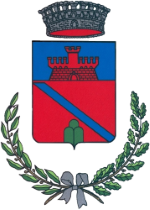
Once, bread ovens with their characteristic rounded shape outside the houses were very common. Today, they have almost entirely disappeared, and the municipality of Valdisotto is surely one of those that have preserved more examples than elsewhere. The oven protruded from the house wall and was generally covered by a small roof. It could be used by multiple people and families, making it a distinctive communal feature. Even the old parish house had one: in 1787, expenses for the design, lime, and construction of an oven in the parish priest’s building were noted in the account book.
In ancient times, municipal statutes regulated the construction of ovens in the village, which had to meet specific construction standards, with no deviations allowed under penalty of a fine. The municipality could also send “inspectors” to verify compliance with these provisions. Homemade bread was a custom in every community (shop-bought bread was a luxury); rye grown in the fields was used for its preparation (characteristic are the photos from the late 19th/early 20th century with sheaves left to dry), although baking was limited to particular periods (spring and autumn), and it was believed that bread made during a waxing moon was better and rose well. The loaves were generally spherical with a hole in the middle so they could be hung and stored for a long time. Indeed, they were consumed dry and cut with a gramola. From sowing to rising and baking, the process culminating in bread-making required long, hard, and meticulous work involving the entire family, including children.
Special attention was needed for sorting the grains because the black ones, which were so because attacked by a poisonous fungus (the ear of corn was thus called “ergot-infected rye”), had to be set aside and were used only in pharmacies for medicinal preparations. It was only around the mid-20th century that this painstaking work was replaced by the threshing machine, which came from Lovero and made the rounds of all the villages in the Upper Valley except Bormio, which had its own. The grains were then taken to the mill for grinding. In ancient times, there was one in Oga on the Rio Cadolena, documented since 1676, of which only a millstone dated 1840 remains, preserved in a house in Calosio.






